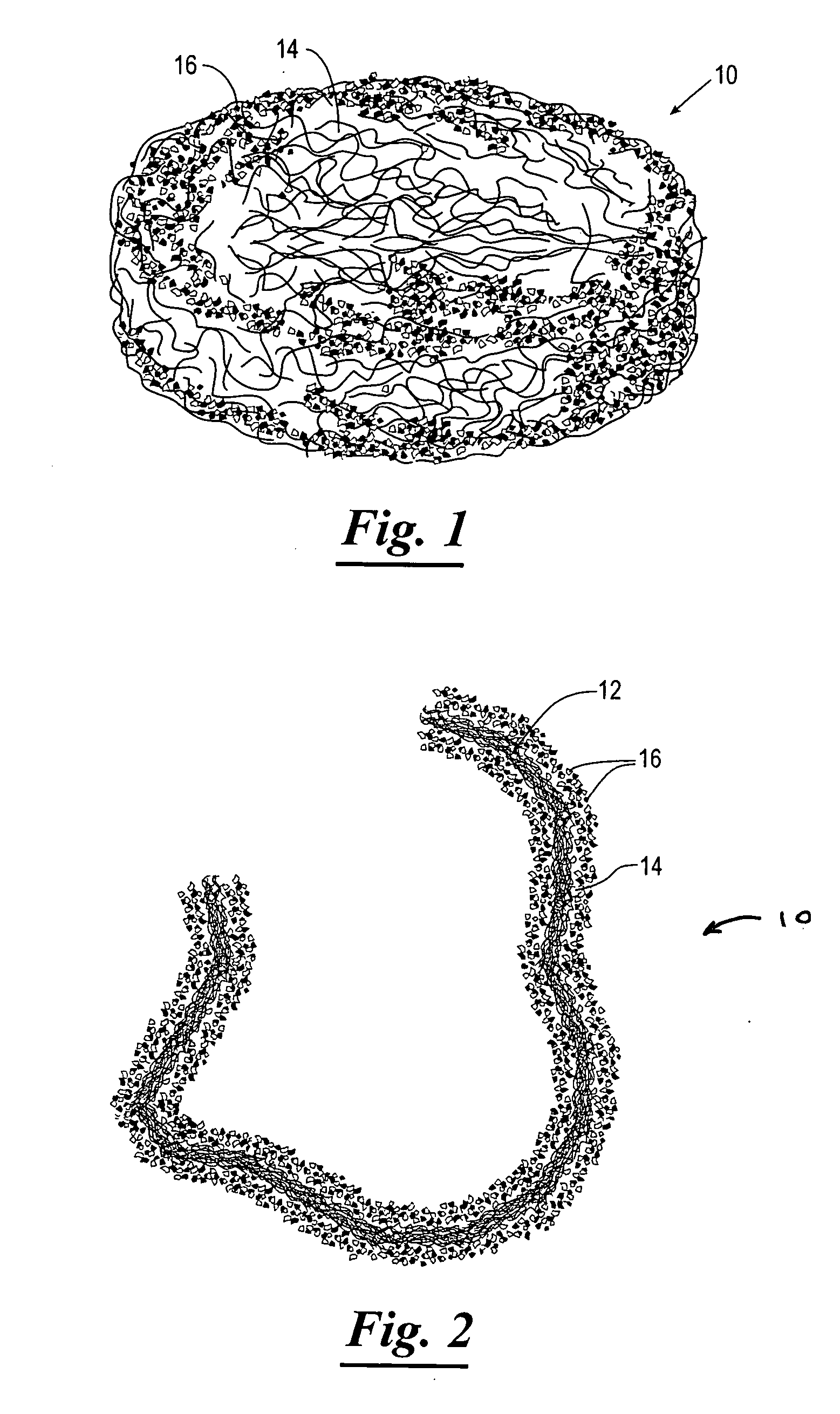Flexible reticulated foam fluid treatment media and method of preparation
- Summary
- Abstract
- Description
- Claims
- Application Information
AI Technical Summary
Benefits of technology
Problems solved by technology
Method used
Image
Examples
example i
[0045] A polyethylene reticulated foam substrate with a density of around 10 pores per square inch, a thickness of approximately one inch and a diameter of around six inches is submerged into a liquid polychloroprene binder for sufficient time to coat the polyethylene substrate with an excess amount of the binder. The coated substrate is passed through the two rollers of the wringer apparatus to eliminate air pockets and create a tight bond between the binder layer and the substrate. The tension applied to the rollers of the wringer apparatus was set to maintain a gap of around 0.15 inches between the rollers during compression of the one-inch thick media. Excess binder is removed from the void spaces of the reticulated foam during compression of the foam in the wringer apparatus. The substrate coated with the binder is allowed to become tacky before application of the particulate materials to the binder. 200 mesh powder consisting of copper / zinc metal particles is applied to the co...
example ii
[0046] A polyethylene reticulated foam substrate with a density of around 10 pores per square inch, a thickness of around one inch and a diameter of eight inches is submerged into a liquid polychloroprene binder for sufficient time to coat the polyethylene substrate with an excess amount of the binder. The coated substrate is passed through the two rollers of the wringer apparatus to eliminate air pockets and create a tight bond between the binder layer and the substrate. The tension applied to the rollers of the wringer apparatus was set to maintain a gap of around 0.15 inches between the rollers during compression of the one-inch thick media. Excess binder is removed from the void spaces of the reticulated foam during compression of the foam in the wringer apparatus. The substrate coated with the binder is allowed to become tacky before application of the particulate materials to the binder. 200 mesh powder consisting of copper / zinc metal particles is applied to the coated substra...
example iii
[0047] A polyethylene reticulated foam substrate with a density of around 15 pores per square inch, a thickness of one inch and a diameter of around three inches is submerged into a liquid polyurethane binder for sufficient time to coat the polyethylene substrate with an excess amount of the binder. The coated substrate is passed through the two rollers of the wringer apparatus to eliminate air pockets and create a tight bond between the binder layer and the substrate. The tension applied to the rollers of the wringer apparatus was set to maintain a gap of around 0.2 inches between the rollers during compression of the one-inch thick media. Excess binder is removed from the void spaces of the reticulated foam during compression of the foam in the wringer apparatus. The substrate coated with the binder is allowed to become tacky before application of the particulate materials to the binder. 200 mesh powder consisting of KDF-55 metal particles is applied to the coated substrate and kn...
PUM
| Property | Measurement | Unit |
|---|---|---|
| Length | aaaaa | aaaaa |
| Length | aaaaa | aaaaa |
| Pore size | aaaaa | aaaaa |
Abstract
Description
Claims
Application Information
 Login to View More
Login to View More - R&D
- Intellectual Property
- Life Sciences
- Materials
- Tech Scout
- Unparalleled Data Quality
- Higher Quality Content
- 60% Fewer Hallucinations
Browse by: Latest US Patents, China's latest patents, Technical Efficacy Thesaurus, Application Domain, Technology Topic, Popular Technical Reports.
© 2025 PatSnap. All rights reserved.Legal|Privacy policy|Modern Slavery Act Transparency Statement|Sitemap|About US| Contact US: help@patsnap.com



